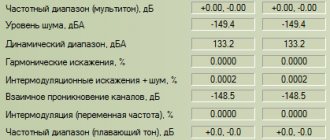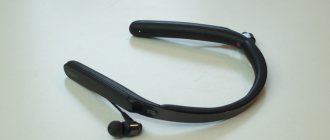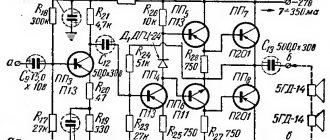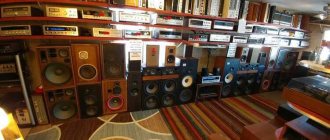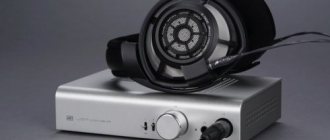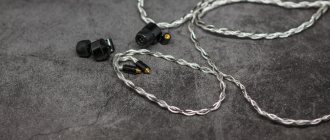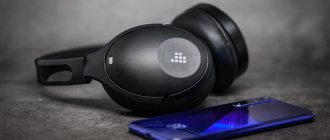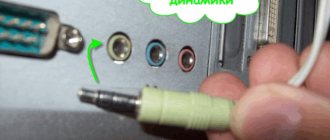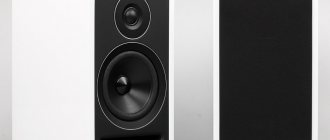Difficult decision or comparing warm with soft?
Any search and tossing in attempts to improve the sound usually begins with the feeling that the usual music system somehow “doesn’t play.” For seasoned music lovers, this feeling only means new expenses. Beginners often limit themselves to purchasing good headphones. If the result does not meet expectations, you have to look for other ways to improve the sound of the music.
Headphone Amplifier
If the sound source is not powerful enough to drive your headphones, the first thing that comes to mind is buying an external amplifier.
Amplifiers built into smartphones or portable players are often not of high quality. On the one hand, in order to increase the overall performance of the gadget, engineers are forced to choose more energy-efficient, but less powerful amplifiers. On the other hand, built-in solutions cannot always provide stable sound without introduced distortion.
In this case, a discrete amplifier designed specifically to output a high-quality audio signal may become the desired alternative. At the same time, compact external amplifiers provide not only the necessary sound volume in the headphones, but also the proper sound stability.
And this is where a problem awaits headphone amplifier users. Moreover, it is not connected with the amplifiers themselves. Amplifiers connected to the headphone output jack deal with the analog signal in the form in which it was converted by the digital-to-analog converter (DAC) built into the smartphone (player or sound card). Manufacturers rarely spend money on high-quality DAC chips, preferring to install inexpensive low-bit chips. The result of the operation of weak DACs can be simplistically described by the following image:
In general, brightness, expressiveness, or even some of the details will be lost. After such a transformation, even the highest quality headphones and amplifier will not save the music.
This is why it often makes more sense to purchase an external digital-to-analog converter.
External DAC
Digital-to-analog converter is a device that converts a digital signal into a stream of electrical pulses for playback in acoustic devices.
In the chain “Signal source – DAC – Amplifier – Acoustics”, the final sound quality depends on each component. The DAC thus bears at least a quarter of the responsibility for what ultimately reaches the listener's ears. That is why it is important to ensure that the audio path contains a high-quality device that converts binary code into an analog signal.
With DACs built into consumer devices, the situation is similar to amplifiers. Energy efficiency and optimization of dimensions force manufacturers to install compact components that do not meet the challenges of outputting detailed sound. In addition, not all users need their phone (or laptop) to “play.” As a result, lovers of high-quality sound are forced to consider purchasing additional peripherals.
Fortunately, the market for portable external DACs is wide. Even in the realities of a crisis and a sagging national currency, you can choose a decent solution that is affordable. Whether for iPhone or Mac. All you need is to be able to connect the device via a USB interface.
For example, not long ago we reviewed two devices from Fostex. One of them is an external DAC Fostex HP-A3 , built on the basis of the AKM AK4390 . This model, at a relatively low price, has everything a demanding music lover needs. The HP-A3 produces very detailed, precise and very dynamic sound. In addition, its charms include the presence of a small amplifier, sufficient for use with low-impedance headphones.
To drive large high-impedance phones, you will need to equip your system with an additional amplifier or use a universal solution.
Harvester
In the same review, we looked at the older model Fostex HP-A4 . It can be classified as a so-called combine - a device that combines both a DAC and an amplifier in one housing.
The HP-A4 digital-to-analog converter is built on a 24-bit PCM1792A and natively supports DSD audio conversion. Well, the amplifier power should be sufficient for most high-impedance headphones.
It is worth noting that buying a combine harvester will not necessarily be a compromise decision. Most often, the manufacturer selects components in such a way that the DAC and the amplification path, if not an ideal pair, at least match each other’s characteristics. In addition, instead of two separate devices, you get one, and sometimes quite compact one.
In my opinion, the only drawback of combined solutions is the impossibility of replacing a separate amplifier or DAC in the path if the sound produced by the system does not correspond to the desired result.
In this case, it is worth considering the purchase of individual components of the audio path, which will entail more serious financial investments.
Instead of output
Unfortunately, when it comes to quality sound, there is no known correct answer. There is no ideal combination of devices, and sometimes it is impossible to achieve this ideal. In choosing the appropriate solution, you can only trust your own hearing.
Thanks to Fostex for the amplifiers and DACs provided.
( 6 votes, overall rating: 4.67 out of 5)
